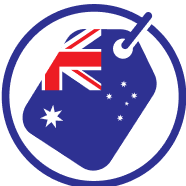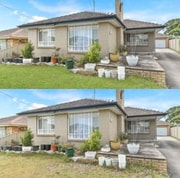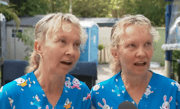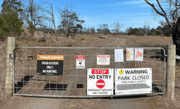‘Most of them couldn’t make it back’: Hidden heartbreak behind this health crisis
By
Maan
- Replies 0
Access to healthcare can be a lifeline—but for many living in remote communities, that access often comes at a cost far greater than distance alone.
One man’s story of resilience and reconnection highlights a broader challenge facing regional Australians, and a significant step forward that could change lives across the country.
After two long years away from home, Frank Watt said being reunited with his family had brought him ‘back to life’.
‘When you’re home you get more support from your family…[it] brings you back to life because you feel happy inside,’ he said.
The 54-year-old had been receiving treatment for end-stage kidney disease between 2022 and 2024 in Townsville, a gruelling multi-leg journey over 850 kilometres from his home on Mornington Island.
There were no suitable renal facilities on the island, forcing Mr Watt—and many like him—into a ‘scary, lonely’ existence far from country.
Mornington Island, nestled in the Gulf of Carpentaria off Queensland’s north coast, is home to roughly 1,000 residents.
Mr Watt was among the first patients to receive care at the island’s new permanent dialysis unit, which opened in June last year at Mornington Island Hospital.
Before that, only a temporary two-chair, satellite-supported haemodialysis unit was available.
The new facility included six chairs and catered to both independent dialysis patients and those needing specialist nursing support.
‘Indigenous people that come from this place, it’s a privilege for them to come home and have dialysis,’ Mr Watt said.
He believed other remote communities should be given the same access to local treatment.
‘I reckon every community, Doomadgee, Normanton…they all need them,’ he said.
‘They can go down the beach and do some fishing when they got day off, sit out with families and have a talk, a yarn, like they used to before they got sick.’
For First Nations communities, the impact of kidney disease had been devastating.
According to Kidney Health Australia, Indigenous Australians were four times more likely to die from kidney-related conditions than the general population.
Data from the Aboriginal and Torres Strait Islander Health Performance Framework showed dialysis accounted for 44 per cent of hospital admissions among Indigenous Australians last year—11 times higher than non-Indigenous patients.
Dialysis required treatment several times a week, each session taking hours.
Without local services, many patients had to leave their homes indefinitely, creating disconnection, grief, and hardship.
Mr Watt said he had known family members who died on the mainland while undergoing dialysis, unable to make it back to the island.
‘Most of them couldn’t make it back,’ he said.
‘It cost a lot of money to bring home a family member back on the island for a funeral.’
Mornington Island director of nursing Scott Windsor said the new dialysis unit had made a ‘significant improvement’ to patients’ quality of life.
‘Having access to such critical services locally means that patients can maintain their routines and support networks, which is vital to their wellbeing,’ he said.
North West Hospital and Health Service chief executive Sean Birgan said the upgrade had delivered care more efficiently and with better continuity.
‘The new, more permanent renal dialysis unit allows us to deliver healthcare services more efficiently and effectively, providing better continuity of care and enhancing overall patient experience,’ Mr Birgan said.
Elsewhere in the region, the health service confirmed that dialysis would soon become a reality in other remote locations.
In Normanton, located 150 km south-east on the mainland, construction was underway for a major hospital upgrade due to open mid-2025.
Though a specific dialysis timeline had not been finalised, Mr Birgan said the new Normanton Hospital would include renal capabilities.
‘They want the capability to deliver dialysis,’ he said.
‘That’s a service they don’t currently have…I can confirm that the new building will have the capability of delivering renal dialysis.’
Further south-west, in Camooweal near the Northern Territory border, dialysis chairs had been ordered for the local primary health clinic.
Acting chief executive Damien Searle said he was waiting for delivery confirmation.
‘We endeavour to inform the community and our patients waiting for dialysis treatment in Camooweal as soon as this service is available,’ Mr Searle said.
In 2024, the federal government committed $18.58 million towards expanding dialysis access in several remote areas, including Normanton.
As Mr Watt settled back into life on Mornington Island, he hoped the expansion of local treatment options would mean others could stay close to family and culture.
Fishing, yarning, and living on country—things that once felt impossible—were now within reach again.
In a previous story, patients shared emotional accounts of their struggles within the healthcare system, calling for urgent change.
Their experiences highlighted just how critical local access to treatment can be.
You can read their powerful story here.

With more dialysis units set to open across remote Australia, could this be the beginning of lasting change for Indigenous healthcare access? Let us know your thoughts in the comments.
One man’s story of resilience and reconnection highlights a broader challenge facing regional Australians, and a significant step forward that could change lives across the country.
After two long years away from home, Frank Watt said being reunited with his family had brought him ‘back to life’.
‘When you’re home you get more support from your family…[it] brings you back to life because you feel happy inside,’ he said.
The 54-year-old had been receiving treatment for end-stage kidney disease between 2022 and 2024 in Townsville, a gruelling multi-leg journey over 850 kilometres from his home on Mornington Island.
There were no suitable renal facilities on the island, forcing Mr Watt—and many like him—into a ‘scary, lonely’ existence far from country.
Mornington Island, nestled in the Gulf of Carpentaria off Queensland’s north coast, is home to roughly 1,000 residents.
Mr Watt was among the first patients to receive care at the island’s new permanent dialysis unit, which opened in June last year at Mornington Island Hospital.
Before that, only a temporary two-chair, satellite-supported haemodialysis unit was available.
The new facility included six chairs and catered to both independent dialysis patients and those needing specialist nursing support.
‘Indigenous people that come from this place, it’s a privilege for them to come home and have dialysis,’ Mr Watt said.
He believed other remote communities should be given the same access to local treatment.
‘I reckon every community, Doomadgee, Normanton…they all need them,’ he said.
‘They can go down the beach and do some fishing when they got day off, sit out with families and have a talk, a yarn, like they used to before they got sick.’
For First Nations communities, the impact of kidney disease had been devastating.
According to Kidney Health Australia, Indigenous Australians were four times more likely to die from kidney-related conditions than the general population.
Data from the Aboriginal and Torres Strait Islander Health Performance Framework showed dialysis accounted for 44 per cent of hospital admissions among Indigenous Australians last year—11 times higher than non-Indigenous patients.
Dialysis required treatment several times a week, each session taking hours.
Without local services, many patients had to leave their homes indefinitely, creating disconnection, grief, and hardship.
Mr Watt said he had known family members who died on the mainland while undergoing dialysis, unable to make it back to the island.
‘Most of them couldn’t make it back,’ he said.
‘It cost a lot of money to bring home a family member back on the island for a funeral.’
Mornington Island director of nursing Scott Windsor said the new dialysis unit had made a ‘significant improvement’ to patients’ quality of life.
‘Having access to such critical services locally means that patients can maintain their routines and support networks, which is vital to their wellbeing,’ he said.
North West Hospital and Health Service chief executive Sean Birgan said the upgrade had delivered care more efficiently and with better continuity.
‘The new, more permanent renal dialysis unit allows us to deliver healthcare services more efficiently and effectively, providing better continuity of care and enhancing overall patient experience,’ Mr Birgan said.
Elsewhere in the region, the health service confirmed that dialysis would soon become a reality in other remote locations.
In Normanton, located 150 km south-east on the mainland, construction was underway for a major hospital upgrade due to open mid-2025.
Though a specific dialysis timeline had not been finalised, Mr Birgan said the new Normanton Hospital would include renal capabilities.
‘They want the capability to deliver dialysis,’ he said.
‘That’s a service they don’t currently have…I can confirm that the new building will have the capability of delivering renal dialysis.’
Further south-west, in Camooweal near the Northern Territory border, dialysis chairs had been ordered for the local primary health clinic.
Acting chief executive Damien Searle said he was waiting for delivery confirmation.
‘We endeavour to inform the community and our patients waiting for dialysis treatment in Camooweal as soon as this service is available,’ Mr Searle said.
In 2024, the federal government committed $18.58 million towards expanding dialysis access in several remote areas, including Normanton.
As Mr Watt settled back into life on Mornington Island, he hoped the expansion of local treatment options would mean others could stay close to family and culture.
Fishing, yarning, and living on country—things that once felt impossible—were now within reach again.
In a previous story, patients shared emotional accounts of their struggles within the healthcare system, calling for urgent change.
Their experiences highlighted just how critical local access to treatment can be.
You can read their powerful story here.
Key Takeaways
- Frank Watt returned home after two years of dialysis treatment in Townsville, saying being with family made him feel alive again.
- A new six-chair dialysis unit opened on Mornington Island in 2024, allowing local patients to receive care without leaving the community.
- Indigenous Australians face disproportionately high rates of kidney disease, with dialysis making up 44 per cent of their hospital admissions.
- New dialysis facilities are planned for Normanton and Camooweal, backed by $18.58 million in federal funding for remote health services.
With more dialysis units set to open across remote Australia, could this be the beginning of lasting change for Indigenous healthcare access? Let us know your thoughts in the comments.








